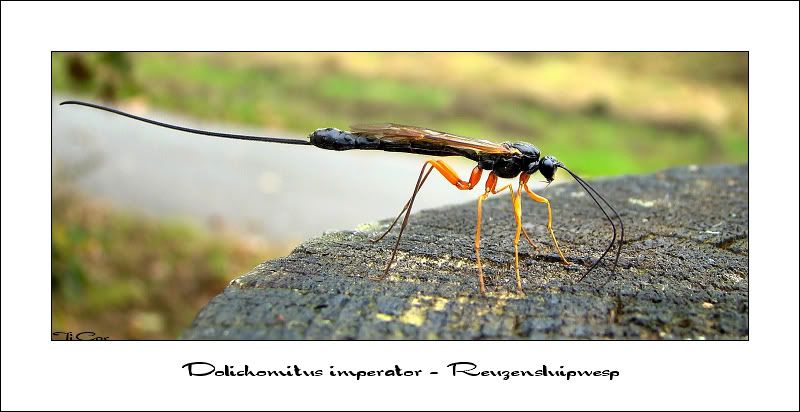Thread subject: Diptera.info :: Dolichomitus imperator
Posted by TiCor on 09-10-2007 23:32
#1
I think this is a Dolichomitus imperator. Is it correct?



Posted by Tony Irwin on 09-10-2007 23:38
#2
I've no idea, Tim - just wanted to congratulate you on the stunning photos! B)
Posted by TiCor on 09-10-2007 23:44
#3
Thank you Tony!
Another one for you :D

Posted by Pierre-Nicolas Libert on 10-10-2007 08:09
#4
You'd better said Dolichomitus sp. Because Dolichomitus species cannot be identified on picture....
Pierre-Nicolas
Posted by Susan R Walter on 10-10-2007 18:36
#5
Amazing:o
Posted by ChrisR on 11-10-2007 10:22
#6
Yeah - lovely photos ... but in this genus a species can only be determined by examining the ridges on the tip of the ovipositor ... which is either hidden in the sheath or burried 3cm into the wood!! :D
Posted by jorgemotalmeida on 11-10-2007 11:22
#7
great photos here! congratulations. ;)
it has 2 filaments... one buried, it is the ovipositor. The other is the ?? What is it the function: protect the ovipositor?
Posted by ChrisR on 11-10-2007 12:29
#8
Actually it has 5 - the ovipositor is made out of 3 very thin filaments that are held together but can be moved individually using muscles at the base to create a 'saw' effect at the tip. The other 2 imobile filaments make up 2 halves of the shealth that protect the ovipositor when it isn't being used. The ovipositor is very tough and even hardened with metals at the tip but it contains nerves that sense chemicals released by the host so it needs protection. :)






